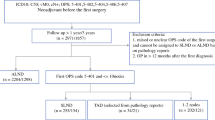Summary
Robotic surgery in the field of head and neck cancer was initiated at the beginning of this century. In the last decade, transoral robotic surgery (TORS) had to prove its oncological equivalence to standardised conservative treatment regimens like radiotherapy and radiochemotherapy and to other transoral or open surgical procedures. The amount of data on oncological efficacy, cost effectiveness and long-term outcomes has continued to increase over the last few years. The transoral approach enables minimally invasive tumour resection, which helps to minimize functional postoperative deficits. Compared with traditional concurrent radiochemotherapy (CRCT), the radiation dose is lower in the adjuvant setting and therefore helps to reduce long-term toxicities. Moreover, in case of absent risk factors in the histological specimen, it might be possible to avoid additional chemotherapy. Thus, long-term toxicities eventually caused by CRCT might be decreased.


Similar content being viewed by others
References
O’Malley BW Jr, Weinstein GS, Snyder W, et al. Transoral robotic surgery (TORS) for base of tongue neoplasms. Laryngoscope. 2006;116(8):1465–72.
Steiner W. Experience in endoscopic laser surgery of malignant tumours of the upper aero-digestive tract. Adv Oto-Rhino-Laryngol. 1988;39:135–44.
Canis M, Martin A, Kron M, et al. Results of transoral laser microsurgery in 102 patients with squamous cell carcinoma of the tonsil. Eur Arch Otorhinolaryngol. 2013;270(8):2299–306.
Canis M, Martin A, Ihler F, et al. Results of transoral laser microsurgery for supraglottic carcinoma in 277 patients. Eur Arch Otorhinolaryngol. 2013;270(8):2315–26.
Pignon JP, le Maitre A, Maillard E, MACH-NC Collaborative Group, MACH-NC Collaborative Group. Meta-analysis of chemotherapy in head and neck cancer (MACH-NC): an update on 93 randomised trials and 17,346 patients. Radiother Oncol. 2009;92(1):4–14.
Steiner W. Endoskopische Laserchirurgie der oberen Luft- und Speisewege. Schwerpunkt Tumorchirurgie. Stuttgart New York: Thieme; 1997.
Nichols AC, Theurer J, Prisman E, et al. Radiotherapy versus transoral robotic surgery and neck dissection for oropharyngeal squamous cell carcinoma (ORATOR): an open-label, phase 2, randomised trial. Lancet Oncol. 2019;20(10):1349–59.
Sethia R, Yumusakhuylu AC, Ozbay I, et al. Quality of life outcomes of transoral robotic surgery with or without adjuvant therapy for oropharyngeal cancer. Laryngoscope. 2018;128(2):403–11.
Castellano A, Sharma A. Systematic review of validated quality of life and swallow outcomes after transoral robotic surgery. Otolaryngol Head Neck Surg. 2019;161(4):561–7.
Choby GW, Kim J, Ling DC, et al. Transoral robotic surgery alone for oropharyngeal cancer: quality-of-life outcomes. JAMA Otolaryngol Head Neck Surg. 2015;141(6):499–504.
Dawe N, Patterson J, O’Hara J. Functional swallowing outcomes following treatment for oropharyngeal carcinoma: a systematic review of the evidence comparing trans-oral surgery versus non-surgical management. Clin Otolaryngol. 2016;41(4):371–85.
Hatten KM, O’Malley BW Jr, Bur AM, et al. Transoral robotic surgery-assisted endoscopy with primary site detection and treatment in occult mucosal primaries. JAMA Otolaryngol Head Neck Surg. 2017;143(3):267–73.
Byrd JK, Smith KJ, de Almeida J, et al. Transoral robotic surgery and the unknown primary: a cost-effectiveness analysis. Otolaryngol Head Neck Surg. 2014;150(6):976–82.
Winter SC, Ofo E, Meikle D, et al. Trans-oral robotic assisted tongue base mucosectomy for investigation of cancer of unknown primary in the head and neck region. The UK experience. Clin Otolaryngol. 2017;42(6):1247–51.
Van Abel KM, Yin LX, Price DL, Janus JR, Kasperbauer JL, Moore EJ. One-year outcomes for da Vinci single port robot for transoral robotic surgery. Head Neck. 2020. https://doi.org/10.1002/hed.26143
Orosco RK, Arora A, Jeannon JP, et al. Next-Generation Robotic Head and Neck Surgery. J Oto-rhino-laryngology. 2018;80(3):213–9.
Spellman J, Coulter M, Kawatkar A, et al. Comparative cost of transoral robotic surgery and radiotherapy (IMRT) in early stage tonsil cancer. Am J Otolaryngol. 2020;102409.
Author information
Authors and Affiliations
Corresponding author
Ethics declarations
Conflict of interest
A. Strobl, M. Hartl, and M. Burian declare that they have no competing interests.
Additional information
Publisher’s Note
Springer Nature remains neutral with regard to jurisdictional claims in published maps and institutional affiliations.
Rights and permissions
About this article
Cite this article
Strobl, A., Hartl, M. & Burian, M. Transoral robotic surgery in head and neck cancer. memo 13, 385–388 (2020). https://doi.org/10.1007/s12254-020-00638-5
Received:
Accepted:
Published:
Issue Date:
DOI: https://doi.org/10.1007/s12254-020-00638-5




